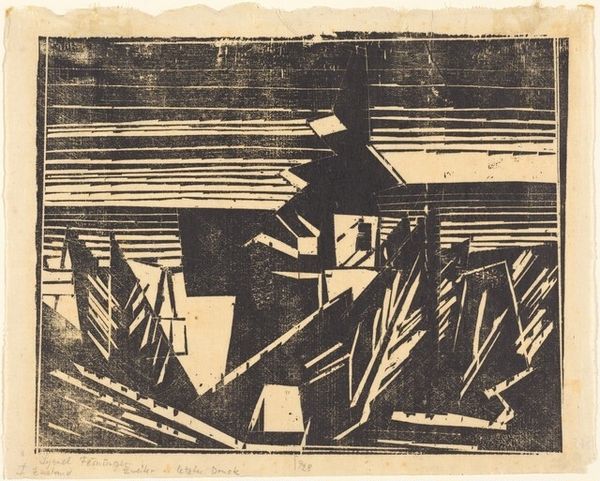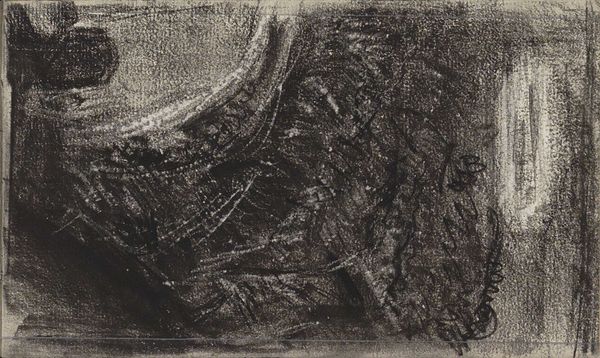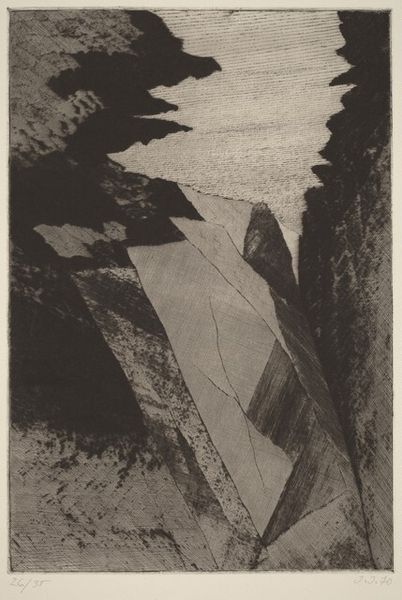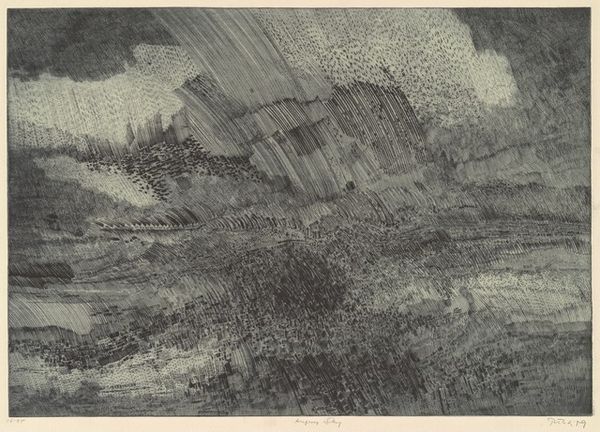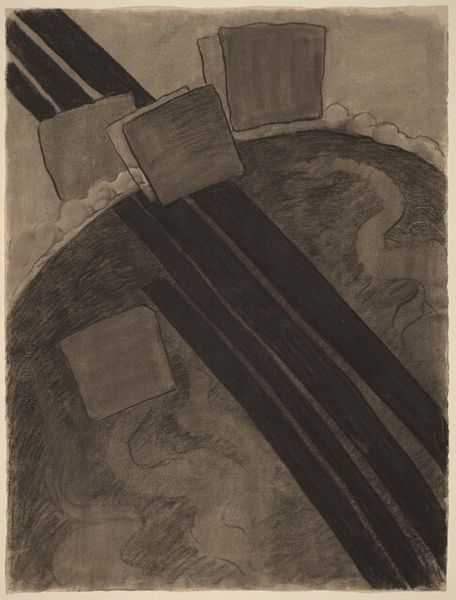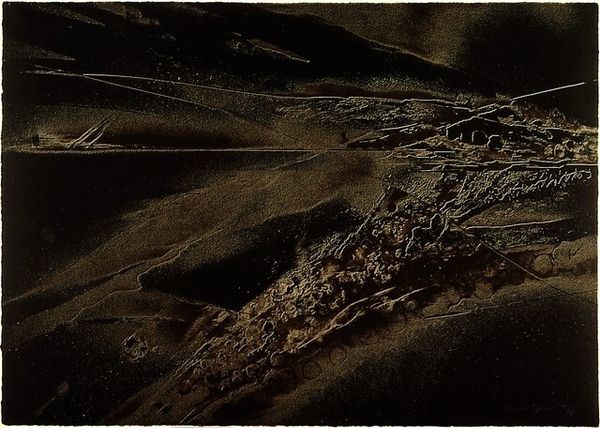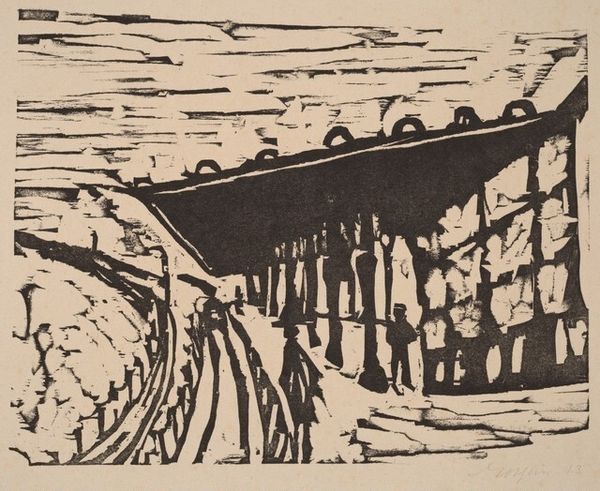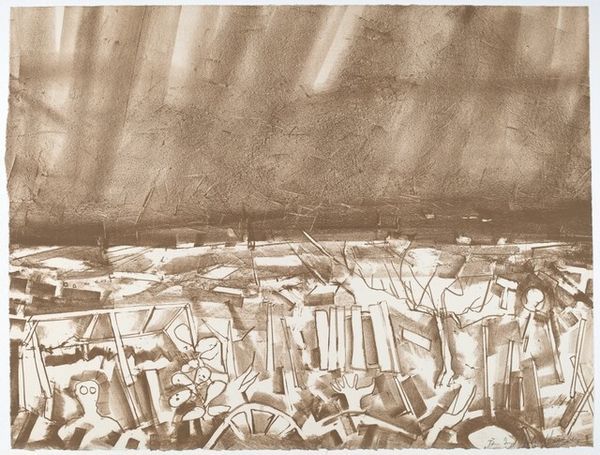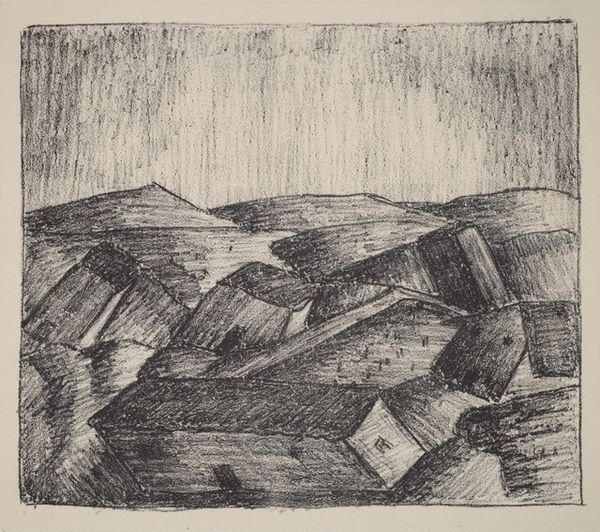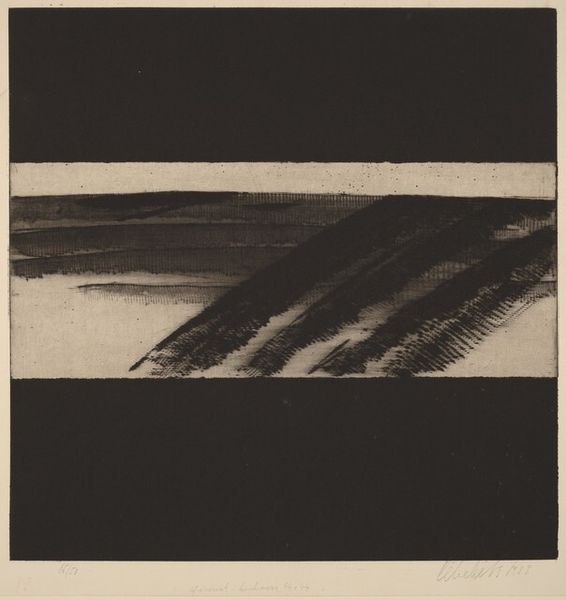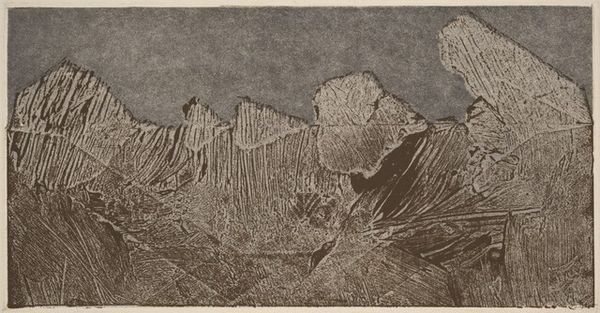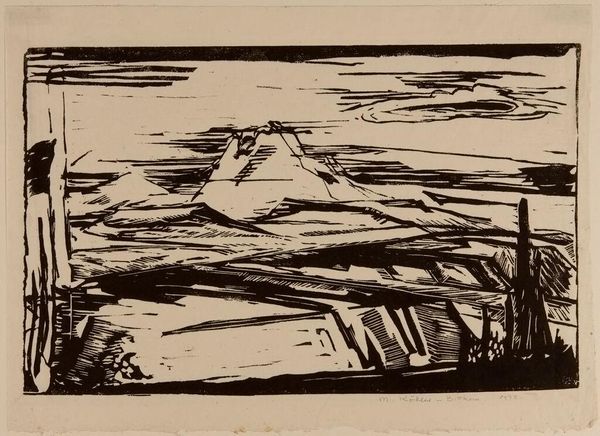
print, woodcut
# print
#
landscape
#
geometric
#
woodcut
#
line
#
mixed media
Copyright: National Gallery of Art: CC0 1.0
Curator: Standing before us is Antonio Frasconi’s 1958 woodcut, "The Frozen Sound." What’s your initial read of this print? Editor: Stark, almost ominous. There’s a feeling of desolation in those bleak lines cutting across the picture plane. What am I really looking at, a ravaged field? Curator: Indeed. Frasconi employed woodcut—a technique involving carving an image into a wooden block—to construct this somewhat severe landscape. The geometric abstraction and the dominance of line underscore the labor inherent in both its creation and potentially the implied land use it depicts. Editor: Yes, you get a sense of something oppressive and manufactured about it; very unsettling given that landscape art, traditionally, makes us feel comfortable. There's something about those lines and stark, nearly uniform color fields suggesting controlled—and possibly exploited—space, reminding me of critiques of environmental degradation. The dark sky is almost a bruise. Curator: Absolutely, the print medium itself is relevant; this wasn’t unique. Woodcuts were reproducible, and Frasconi engaged with various printmaking cooperatives throughout his career. Think about the accessibility this offered him—both to distribute his artwork and comment on larger socio-political matters, and engage diverse viewers. Editor: This speaks to Frasconi’s wider engagement with social justice. Given the era, post-war, and the emerging consciousness around environmentalism and social inequalities, how do you see that impacting Frasconi’s artistic vision here? Is the frozen sound a stifled voice? Curator: Frasconi often tackled social themes. Considering "The Frozen Sound", perhaps we can interpret this as commentary on resource control, agriculture, land distribution during an era when global conversations surrounding land ownership and access were coming to the forefront. The labor of creating such stark lines mirrors themes of work and perhaps a commentary on agrarian society. Editor: A society silenced, perhaps. Those pale forms in the foreground…are they bones? They speak to a sense of loss, possibly mirroring the ecological damage inflicted upon the land. It calls for engagement. Curator: Exactly. The brilliance is in Frasconi’s material and his medium aligning seamlessly with potential social critique, and its ongoing resonances today. Editor: Ultimately, that starkness gives the artwork its weight, pushing beyond traditional landscapes to challenge our notions of progress.
Comments
No comments
Be the first to comment and join the conversation on the ultimate creative platform.
